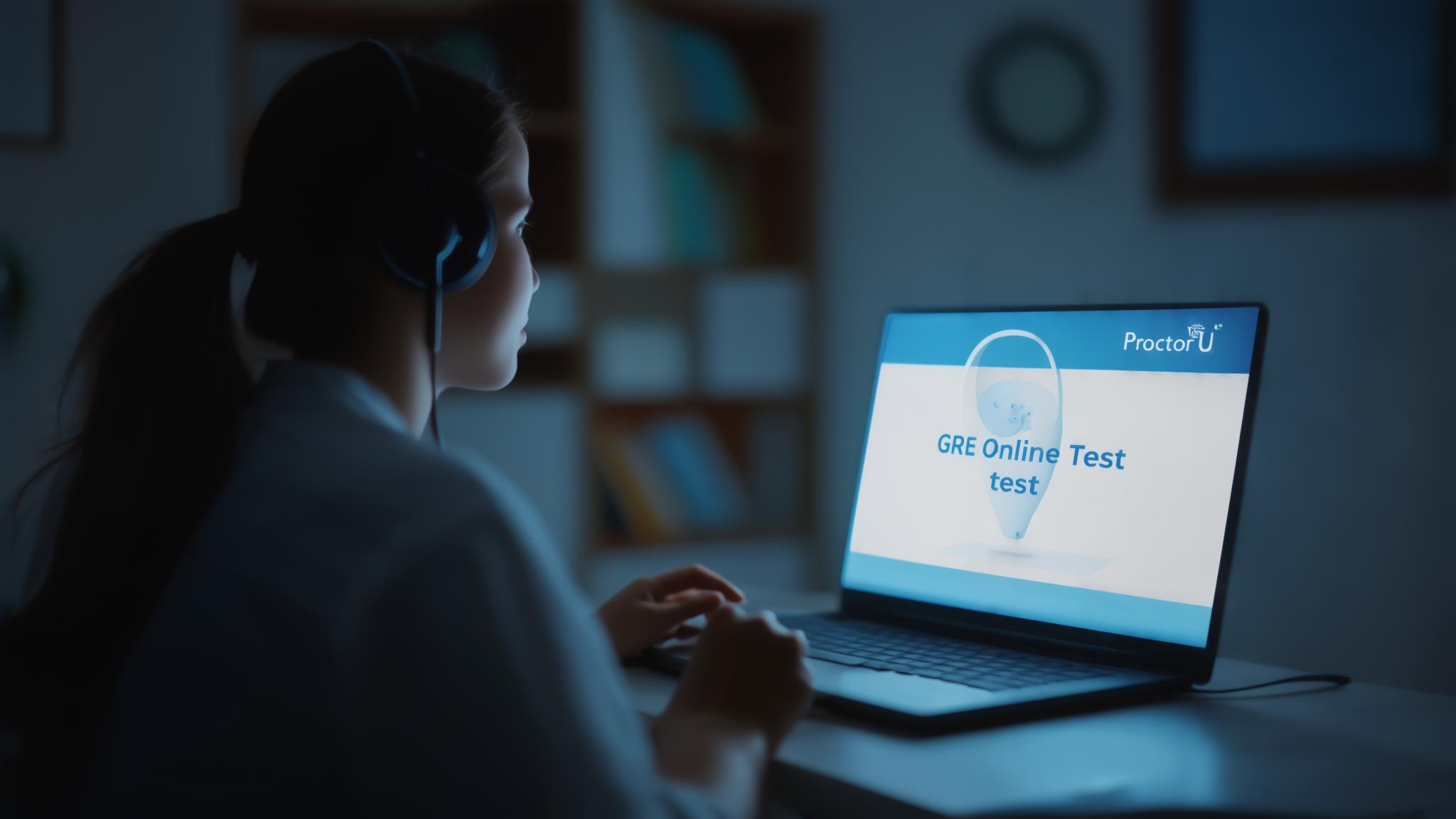-
Table of Contents
- A Comprehensive Guide to Taking the GRE Online with ProctorU
- Understanding the GRE Online Format
- Why Choose the Online GRE?
- Registration and Scheduling
- Creating an ETS Account
- Registering for the GRE Online
- ProctorU Account Creation
- Payment and Confirmation
- System Requirements and Environment Setup
- Technical Requirements
- Environment Requirements
- ProctorU Equipment Check
- Test-Day Procedures with ProctorU
- Check-In Process
Okay, here’s a comprehensive guide to taking the GRE online with ProctorU, optimized for SEO and designed to be informative and helpful for students.
“`html
A Comprehensive Guide to Taking the GRE Online with ProctorU

The Graduate Record Examinations (GRE) is a standardized test that is an admissions requirement for many graduate schools in the United States and worldwide. In recent years, the Educational Testing Service (ETS), the organization that administers the GRE, has made the test more accessible by offering an at-home version proctored by ProctorU. This guide provides a detailed overview of taking the GRE online with ProctorU, covering everything from registration to test-day procedures and troubleshooting.
Understanding the GRE Online Format
The online GRE mirrors the format and content of the test center version. It assesses verbal reasoning, quantitative reasoning, and analytical writing skills. The structure is as follows:
- Analytical Writing: One section with two separately timed essay tasks (30 minutes each).
- Verbal Reasoning: Two sections, each with 20 questions (30 minutes each).
- Quantitative Reasoning: Two sections, each with 20 questions (35 minutes each).
- Unscored Section: An unidentified unscored section (either Verbal or Quantitative).
- Research Section: An identified research section that does not count towards your score.
The total testing time is approximately 3 hours and 45 minutes, including breaks. The online GRE is adaptive at the section level, meaning the difficulty of the second Verbal and Quantitative sections is determined by your performance on the first section.
Why Choose the Online GRE?
Taking the GRE online offers several advantages:
- Convenience: Test from the comfort of your home, eliminating travel time and costs.
- Flexibility: More scheduling options, including evenings and weekends.
- Familiar Environment: Reduced test anxiety for some test-takers who perform better in a familiar setting.
However, it’s crucial to consider potential drawbacks, such as the need for a stable internet connection and a quiet, distraction-free environment.
Registration and Scheduling
Creating an ETS Account
The first step is to create an ETS account on the official ETS website (ets.org/gre). This account will be your hub for registration, score reporting, and accessing other GRE-related resources.
Registering for the GRE Online
Log in to your ETS account and select the option to register for the GRE. Choose the “GRE General Test at Home” option. You’ll be prompted to select a test date and time. Availability varies, so it’s advisable to register well in advance, especially if you have specific scheduling needs.
ProctorU Account Creation
After selecting your test date and time, you’ll be directed to the ProctorU website to create an account or link your existing account. ProctorU is the third-party proctoring service that monitors you during the online GRE.
Payment and Confirmation
Pay the GRE test fee (currently $220, but subject to change) through the ETS website. Once payment is confirmed, you’ll receive a confirmation email from both ETS and ProctorU with details about your test appointment.
System Requirements and Environment Setup
Meeting the technical and environmental requirements is crucial for a smooth testing experience. Failure to comply can result in test cancellation.
Technical Requirements
- Operating System: Windows 10 or higher, or macOS 10.13 or higher.
- Browser: Chrome or Firefox (latest versions).
- Webcam: External or integrated webcam with a resolution of at least 640×480.
- Microphone: Functioning microphone.
- Speakers: Functioning speakers.
- Internet Connection: A stable internet connection with a minimum speed of 2 Mbps.
Environment Requirements
- Private Room: You must be alone in a quiet, well-lit room.
- Clean Workspace: Your desk or table must be clear of all materials except for your computer, keyboard, and mouse.
- No Mobile Phones or Electronic Devices: All mobile phones, tablets, and other electronic devices must be switched off and out of reach.
- No Food or Drinks: Eating and drinking are prohibited during the test.
- Appropriate Attire: Dress comfortably but professionally. Your ears must be visible throughout the test.
- Whiteboard/Transparent Sheet: You are allowed to use one small whiteboard with an erasable marker or one transparent sheet protector with a erasable marker. These must be shown to the proctor before the test begins.
ProctorU Equipment Check
Before your test day, run a system check through the ProctorU website to ensure your equipment meets the requirements. This check will verify your internet speed, webcam, microphone, and browser compatibility. Addressing any issues beforehand can prevent disruptions during the test.
Test-Day Procedures with ProctorU
Check-In Process
Approximately 15-30 minutes before your scheduled test time, log in to your ProctorU account and initiate the check-in process. You’ll be prompted to download and install the ProctorU extension if you haven’t already done so.
A proctor will connect with you via live video chat. They will ask you to verify your identity by showing a valid photo ID (e.g., passport, driver’s license). The proctor will then guide you through a series of security checks, including:
- 360-Degree Room Scan: Using your webcam, you’ll need to show the proctor your entire room, including the walls, ceiling, and floor.
- Desk Inspection: The proctor will ask you to show your desk and ensure it’s clear of prohibited items






